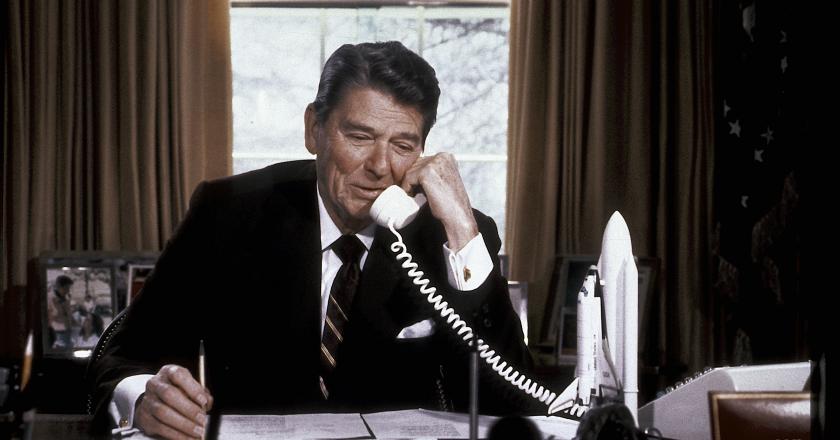By Greg Scott, Director, Media
“In this age... public sentiment is everything. With it, nothing can fail; against it, nothing can succeed. Whoever molds public sentiment goes deeper than he who enacts statutes, or pronounces judicial decisions.” -President Abraham Lincoln
We are engaged in a battle for the future of our society. There will be winners and there will be losers. And our anti-freedom opposition is relentless. So, if we want to preserve our freedom, there is not a second to spare and not a word to waste.
As Ronald Reagan said, “Freedom is never more than one generation away from extinction.”
That’s true. It’s also true that “Every conversation is part of our mission to change the culture.”
That’s good news: we have a chance to share the hope of freedom, opportunity, and prosperity with every audience, whether that’s during a national TV interview or in a one-on-one conversation.
Each of us plays a role in what kind of future we will have. You are making a difference on the ground every day as you build relationships and influence your communities with effective advocacy that will allow us to keep our Republic today and safe-keep it for future generations.
How effectively we communicate our ideas, how well we mold public opinion, will determine what side history is ours—the winning side or the losing side.
That’s the purpose of this section: to help you with a plan for how to present our ideas for the purpose of winning friends for our cause and growing our movement.
Mission-Focused Mindset
The one and only reason the Heritage Foundation engages in any public communications is to influence audiences to respond in ways that advance our mission. You should adopt a similar mindset.
Before entering any mission-focused conversation, no matter what role you play in this battle of ideas, consider these questions:
- What is my mission?
- Who is my audience?
- What is my message?
- What do I want my audience to do with the message I deliver?
In other words, we go in with a plan. That plan requires knowing what you believe, why you believe it and having the right message to persuade your audience to join you.
Crafting a Mission-Focused Message
Our message is not “here are the facts.” How many of you have heard the statement Ben Shapiro has made famous: “Facts don’t care about your feelings.” Well, with all due respect to Ben, he has it perfectly backwards. The reality is that “Feelings don’t care about your facts.”
This is not to say that we should adopt an exclusively emotional appeal. We shouldn’t. However, we must understand that humans are heart-centric decision makers. If we don’t gain the audience’s trust by presenting an appealing vision of a shared future, we will never get your audience to listen to our facts and data in the first place. And we will certainly not convince them to join our movement.
Crafting a message for crucial conversations about our country’s future is a three-step, purposefully sequential process consisting of the following elements:
- Engage (Heart) – get attention, earn trust, present a compelling vision
- Equip (Mind) – supply the knowledge to deepen commitment to your vision
- Activate (Soul) – inspire action to advance your mission to build a movement
Delivering the Mission-Focused Message in Every Conversation
Again, go in with a plan. Not a general plan, but a specific plan of how you want to win. And by “win,” I don’t mean get more debate points. I mean win your conversation partner’s heart and mind.
You want to build a 20-30 second script to rehearse before entering the culture-changing conversation.
Tom Brady has a playbook. Yoyo Ma has sheet music. Denzel Washington has a script. They are at the top of their professions. Yet they all practice all the time.
What you are doing is far more important than what they do, so treat it that way. Rehearsing your message makes you think more deeply about your ideas, makes them part of your DNA and makes you better prepared to express them effectively.
1. Script your first 20-30 seconds (literally…seriously)
a. Establish Common Ground (Engage-Heart)
b. Draw Contrast/Identify a Choice (Heart Head)
c. Confirm Credibility with Compelling Facts (Equip-Head)
d. Deliver a Call to Action (Activate-Soul)
2. Rehearse your first 20-30 seconds (literally…seriously)
Sample
(a.) Americans should be free to share our beliefs without fear of punishment by the government. (b.) Free expression is protected by the Constitution, but some want the state to have the power to restrict speech. (c.) As Americans, we can either fight for our freedom, or surrender to those who want to take our freedom away. (d.) [Direct your conversation partner to the best Heritage resources!].

